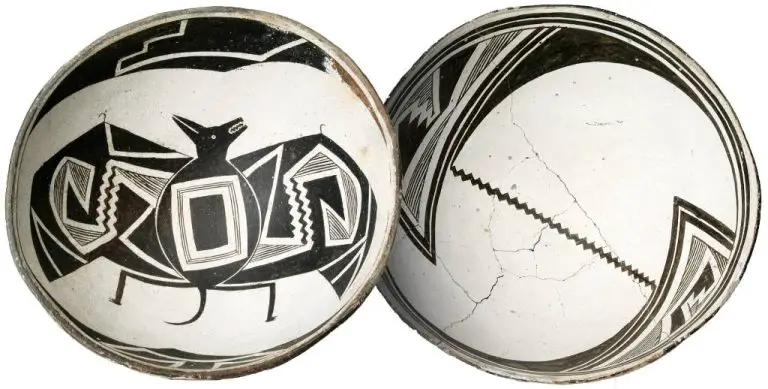What Are The Seals Of Harappan Civilization With Clay?
The Harappan civilization flourished in the Indus River Valley from around 2600 BCE to 1900 BCE. Often referred to as the Indus Valley Civilization, it was one of the world’s earliest urban civilizations,existing and trading alongside Mesopotamia and Ancient Egypt.
The Harappans were prolific manufacturers of seals, small carved objects made of stone, clay, copper, bronze and other materials. These seals contain intricate designs and undeciphered writing which provide insights into Harappan society, culture and trade.
The seals were used for multiple purposes including as amulets, indicative of identity,rank and authority, as well as for trade documentation and controlling access to important areas. The uniformity of many seals indicates the presence of trained seal craftsmen and organized administration.
Thousands of seals have been found by archaeologists at major urban centers of the Harappan civilization like Mohenjo-Daro, Harappa, Dholavira and Lothal. Studying the iconography,material and provenance of the seals gives clues about Harappan life, beliefs and interactions with other civilizations of the time.
Types of Seals
The seals of the Harappan civilization were made from various materials, but the vast majority were fashioned from steatite, a soft stone that was abundant in the region. Steatite seals make up around 90-95% of the total seals discovered. The softness of steatite allowed artisans to carve intricate designs and motifs into the surface of the seals.
The seals were generally square or rectangular in shape. The most common dimensions were 1 x 1 inches or 1 x 2 inches. Smaller square seals around 1⁄2 x 1⁄2 inch have also been found. The rectangular seals were often longer than they were wide. While square and rectangular forms were standard, some seals had more unique shapes such as triangles, disks, or animal shapes.
In addition to steatite, other materials were occasionally used include faience, agate, copper, terracotta, and ivory. Faience is a glazed ceramic which produced seals with bright blue-green colors. Though not as common, these diverse materials reflect the range of resources and techniques used for seal making in the Harappan civilization.
Iconography
The Harappan seals contain many common motifs and iconographic images. The most frequent motif is the zebu bull, which appears on thousands of different seals. The powerful, sturdy zebu bull was a symbol of strength and virility. Other common animals found on seals include elephants, tigers, rhinoceroses, and mythical composite creatures. In addition to animals, trees and plants like pipal leaves and trefoil patterns were prevalent seal images.
Many seals also contain religious iconography relating to Hinduism and early yogic practices. For example, seals depicting a three-faced seated yogi in a meditating posture were found at Mohenjo-daro. This figure is an early representation of the Hindu god Shiva. Other seals show figures sitting cross-legged surrounded by animals, which may depict early yogis practicing meditation.
Beyond animals and religious figures, the Harappan seals also incorporated geometric designs, proto-writing symbols, and scenes of ritual activity. The wide range of seal iconography provides insight into the culture, religion, and symbolic communication system of the Harappan Civilization.
Seal Making Process
The seals of the Harappan Civilization were made by pressing carved intaglio seals into soft clay. The seals were small, typically 1-2 inches square, and made of steatite, a soft stone. The artisans would carve images and script into the surface of the stone using sharp tools. The carving was done in negative, like an imprint, so that when pressed into clay it would leave a positive image.
The seal maker would first shape the steatite into a square or rectangular block. They would sketch the design onto one side, then use various drills, chisels and blades to incise the intricate designs and writing into the stone. This took great skill to carve the tiny details precisely. The depth of carving was usually 1-2 mm. Some seals have up to seven separately carved layers showing remarkable craftsmanship.
Once the carving was complete, the seal was ready to be pressed into soft clay, leaving an impression as a mark of authentication or signature. The seals were pressed onto clay tags attached to bundles of trade goods, or used to seal storage containers and doors. The durability of fired clay meant the imprint would remain intact for archaeologists to uncover thousands of years later.
Uses and Purpose
The seals of the Harappan civilization served several important purposes in trade, identity, and record keeping:
Trade – The seals were used to mark goods and shipments, acting as a kind of branding. This helped with trade between cities in the Harappan civilization across a large geography. The seals provided quality assurance and helped ensure items reached their correct destinations.
Identity – The seals also likely conveyed identity, with the common motifs providing a unifying cultural identity across Harappan cities. At the same time, the distinct iconography and rare materials for some seals conveyed status, authority, and special roles. Individuals of high rank likely used personal seals as signatures.
Record keeping – The seals aided in record keeping for commercial transactions, inventory tracking, and agricultural yields. The seals marked tablets and packages for record keeping and storage. The durable fired clay preserves clear impressions when pressed into softer clay.
Notable Examples
Some of the most famous and iconic Harappan seals include:
The Pashupati Seal: Discovered in Mohenjo-daro, this seal depicts a seated figure surrounded by animals. He has three faces and is wearing a headdress with horns. This figure has been interpreted as an early representation of the Hindu god Shiva in his form as Pashupati, meaning “Lord of Animals”. The seal provides evidence of an early form of Hinduism in the Indus Valley.
The Unicorn Seal: Showing a mythical single-horned animal, this seal demonstrates that ancient Harappans had knowledge of and interest in legendary creatures. The unicorn was seen as a powerful and royal symbol.
The Bull-Man Seal: Depicting a man dressed in a bull costume, this seal may represent early veneration of the bull or a bull-man deity in the Indus Valley. Bull iconography features prominently in Harappan seals.
The Elephant Seal: Elephants were not native to the Indus Valley, but this seal depicts a figure riding an elephant. It shows the Harappans were familiar with elephants, likely through trade with regions to the west.
The Swastika Seal: One of the earliest known uses of the swastika symbol, this seal shows the cross-like symbol within a circle. The swastika had religious and spiritual meaning for the Harappans.
Undeciphered Script
The seals of the Harappan Civilization contain an undeciphered writing system consisting of between 400 and 600 distinct signs. Despite over a century of attempts by archaeologists and linguists, the script remains undecoded. The primary challenges are the brevity of the inscriptions, the restricted context in which they are found, and the lack of bilingual texts, which made deciphering other ancient scripts possible.
Based on the direction of writing, scholars believe the script was written from right to left. The signs are composed mainly of pictograms, ideograms, and phonetic signs representing syllables. There have been many attempts to connect the script to later Indian scripts or language families, but none have proven conclusive. Some scholars believe that even if decoded, the script may not represent a full-fledged language, but rather be restricted to economic transactions.
The continued mystery surrounding the script has led some to characterize it as being perhaps too short or simplistic to actually convey information. However, the large number of distinct signs, their standardization over a wide region, and their presence on seals associated with economic functions argues against this. Further archaeological and computational analysis offers hope that the script may yet be deciphered through the recovery of longer textual examples or lexical patterns.
Archaeological Insights
Seals provide a fascinating glimpse into the daily life, art, and beliefs of Harappan culture. The scenes on seals reveal details about mythology, religion, agriculture, architecture, animals, and more. For example, repeated images of a horned figure surrounded by animals may represent an early Harappan deity or divine figure. Depictions of elaborate temples hint at the importance of religious worship and ceremony. Images of farming, irrigation, and domesticated animals demonstrate the agricultural foundations of Harappan society. Stylized figures in ritual poses give clues to religious practices. Plant and animal motifs illustrate the local flora and fauna. Even the materials used to make seals, like steatite, reveal extensive trade networks to import stones from distant regions. The level of artistry and consistency of motif types across a vast area demonstrate a shared symbolic system and common cultural practices among Harappans. The undeciphered writing indicates the existence of administration and bureaucracy. Overall, Harappan seals provide invaluable insight into early Indian society, belief systems, visual arts, trade networks, and writing.
Decline
The collapse of the Indus Valley Civilization around 1900 BCE led to major changes in seal design and usage. As urban centers were abandoned, standardized practices of administration and trade declined. The level of craftsmanship and intricacy of seal carving also deteriorated after the peak of the Mature Harappan period.
Post-Harappan seals became cruder, simpler, and less detailed. The realistic animal motifs that were hallmarks of Indus seals gave way to more abstract, geometric designs. The fine drilling to make beads and holes was replaced by rough incising. The standardized system of weights and measures reflected in seal iconography broke down, indicating a disruption in trade networks.
The undeciphered Indus script also disappeared from post-Harappan seals. By around 1700 BCE, inscriptions were rare and the writing system had been forgotten. This marked the end of the tradition of literate administration practices that had characterized mature Harappan cities.
The changes in seals paralleled the loss of urbanization, planned settlements, sanitation systems, arts, and other hallmarks of the Indus Valley Civilization after its peak. The simpler, cruder seals indicate a reduction in administrative complexity and trade networks as cities were abandoned.
Legacy
The seals of the Harappan civilization had a lasting impact on later Indian culture and art. The iconic imagery seen on the seals, such as the bull, elephant, and unicorn, continued to hold significance in Hindu, Buddhist, and Jain art for centuries after the decline of the Indus Valley civilization. The tradition of using stamp seals also carried on in ancient and medieval India, evidenced by finds at sites across the subcontinent. Stylistic elements seen on Indus seals, including the triangular composition framing religious motifs, reappeared in classical Indian sculpture and temple carvings. The famous Pashupati seal has been likened to later representations of Shiva, highlighting continuity between Harappan and Hindu concepts. While the Indus script remains undeciphered, the existence of this ancient writing system influenced the development of subsequent Indian scripts. The artistic mastery and manufacturing techniques revealed by the seals of ancient meloharic craftsmen left a legacy that shaped Indian art history long after the cities of the Indus Valley were abandoned.



